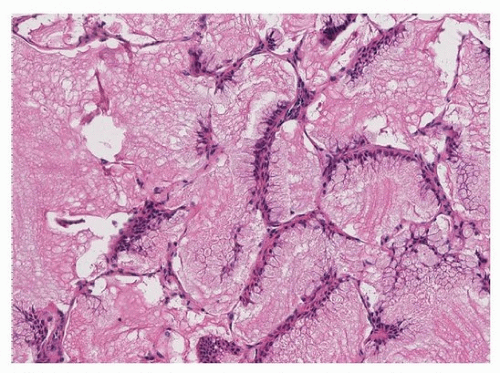Unlike nonmucinous adenocarcinomas, the lepidic spread of mucinous adenocarcinoma in situ is characterized by completely normal alveolar septa without any fibrotic thickening (
Fig. 76.1). The tumor cells are more often columnar than goblet, follow the contours of the alveolar septa, and show uniform polarity, apical intracellular mucin (as nuclei are parallel and basally located), and a fine brush border (
Fig. 76.2). Alternatively (and in mixed mucinous and nonmucinous tumors), cells may be more cuboidal, with variable numbers of goblet cells (
Figs. 76.3 and
76.4). The alveolar spaces are typically filled with mucin and scattered inflammatory cells. By definition, there are no detached intra-alveolar tumor cell clusters in pure adenocarcinoma in situ or minimally invasive adenocarcinoma, and the lesion is single. If there is an invasive component, it is by definition <5 mm (minimally invasive adenocarcinoma) and consists entirely of acinar, solid, or papillary growth without necrosis or lymphatic invasion.






